Welcome to my comprehensive review of the Celestron PowerSeeker 127EQ telescope.
As an astronomy enthusiast, I’ve spent considerable time exploring the night sky with various telescopes, and today, I’m excited to share my insights on this particular model.
The Celestron PowerSeeker 127EQ combines affordability with functionality, making it an appealing choice for beginners and those on a budget.
In this review, I’ll cover everything from its technical specifications to its practical usage, including the pros and cons, to help you determine if it’s the right telescope for you.
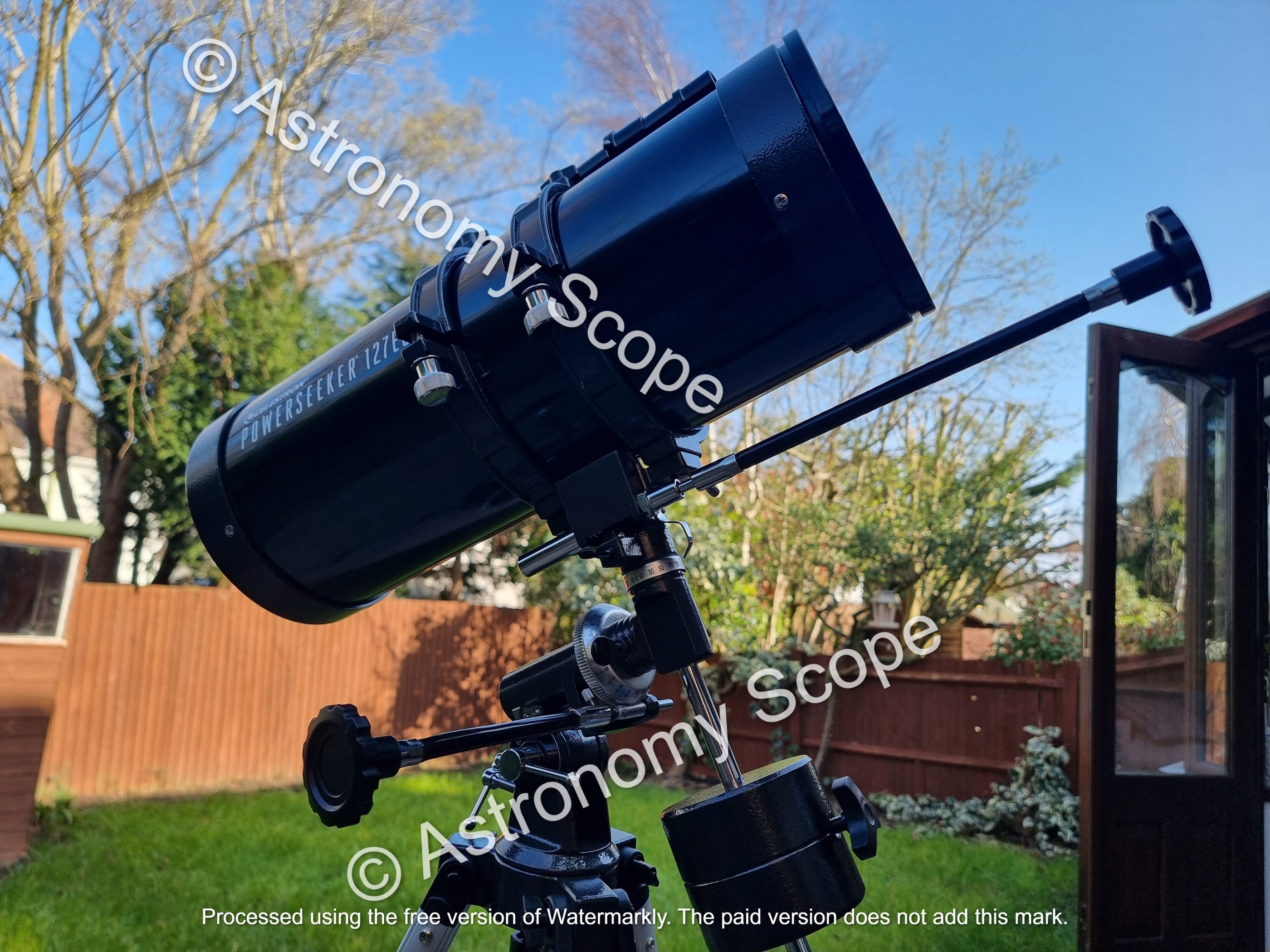
Quick Verdict
The Celestron PowerSeeker 127EQ is a great choice for those looking for their first telescope.
It’s also idea for anyone who wants a more hands-on astronomy experience, due in part to its manual operation.
With great versatility and optics at a very affordable price point, it’s a great entry level telescope.
Celestron PowerSeeker 127EQ Telescope Review
Personal Testing Results
Having purchased and used the Celestron PowerSeeker 127EQ for a while now, I’ve been able to assess its capabilities in a wide range of settings.
Here are the findings and results.
Overall Score: 8.7
| Testing Feature/Aspect | Score (1-10) |
|---|---|
| Optical Quality | 8.9 |
| Magnification and Objective Lens | 8.8 |
| Build Quality and Ergonomics | 8.9 |
| Stability | 9.2 |
| Accessories | 8.5 |
| Price and Warranty | 9.3 |
| Overall User Experience | 8.7 |
| Portability | 8.4 |
| Durability and Longevity | 8.9 |
My Testing Criteria
- Optical Quality: I assessed the clarity, color accuracy, and image sharpness through observations of celestial objects to evaluate the telescope’s optical excellence.
- Magnification and Objective Lens: By finding the balance between magnification and lens size, I determined the telescope’s ability to provide optimal views of the night sky.
- Build Quality and Ergonomics: I examined the telescope’s sturdiness and user comfort during extended use, ensuring it’s well-crafted and comfortable for stargazers.
- Stability: I tested the image stability both when using the telescope handheld and with a tripod, ensuring consistent and clear observations.
- Accessories: I reviewed the quality and usefulness of included accessories, such as eyepieces and mounting equipment, to enhance the overall user experience.
- Price and Warranty: I assessed the telescope’s affordability and warranty coverage, ensuring it provided excellent value for money.
- Overall User Experience: I considered the ease of setup and use, alignment and tracking capabilities, and compatibility with additional accessories and upgrades to gauge the telescope’s overall user-friendliness.
- Portability: I evaluated the telescope’s size, weight, and ease of transport for on-the-go stargazing.
- Durability and Longevity: I examined the build materials and construction to ensure the telescope can withstand environmental conditions and provide lasting performance.
My Image Gallery

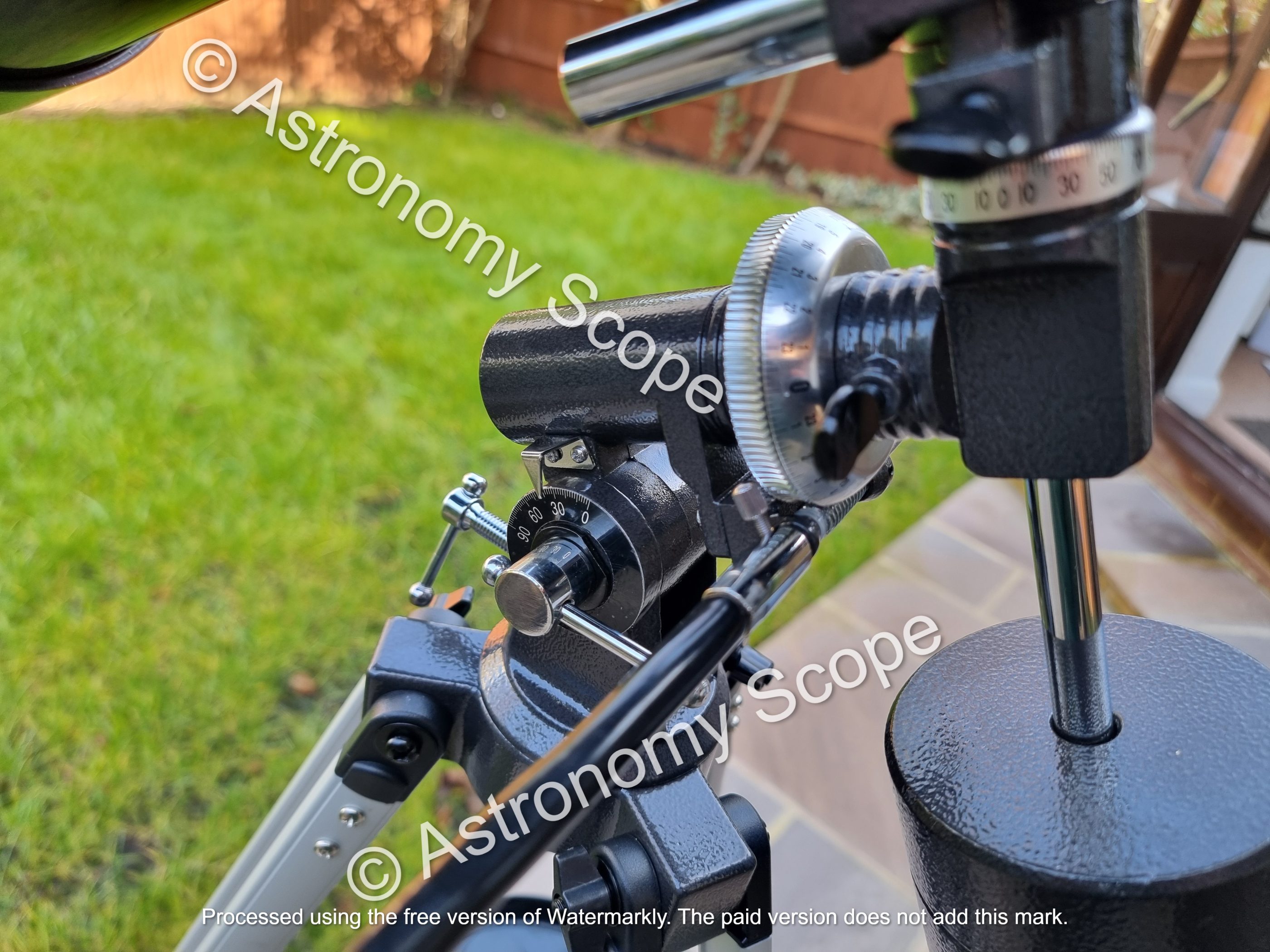
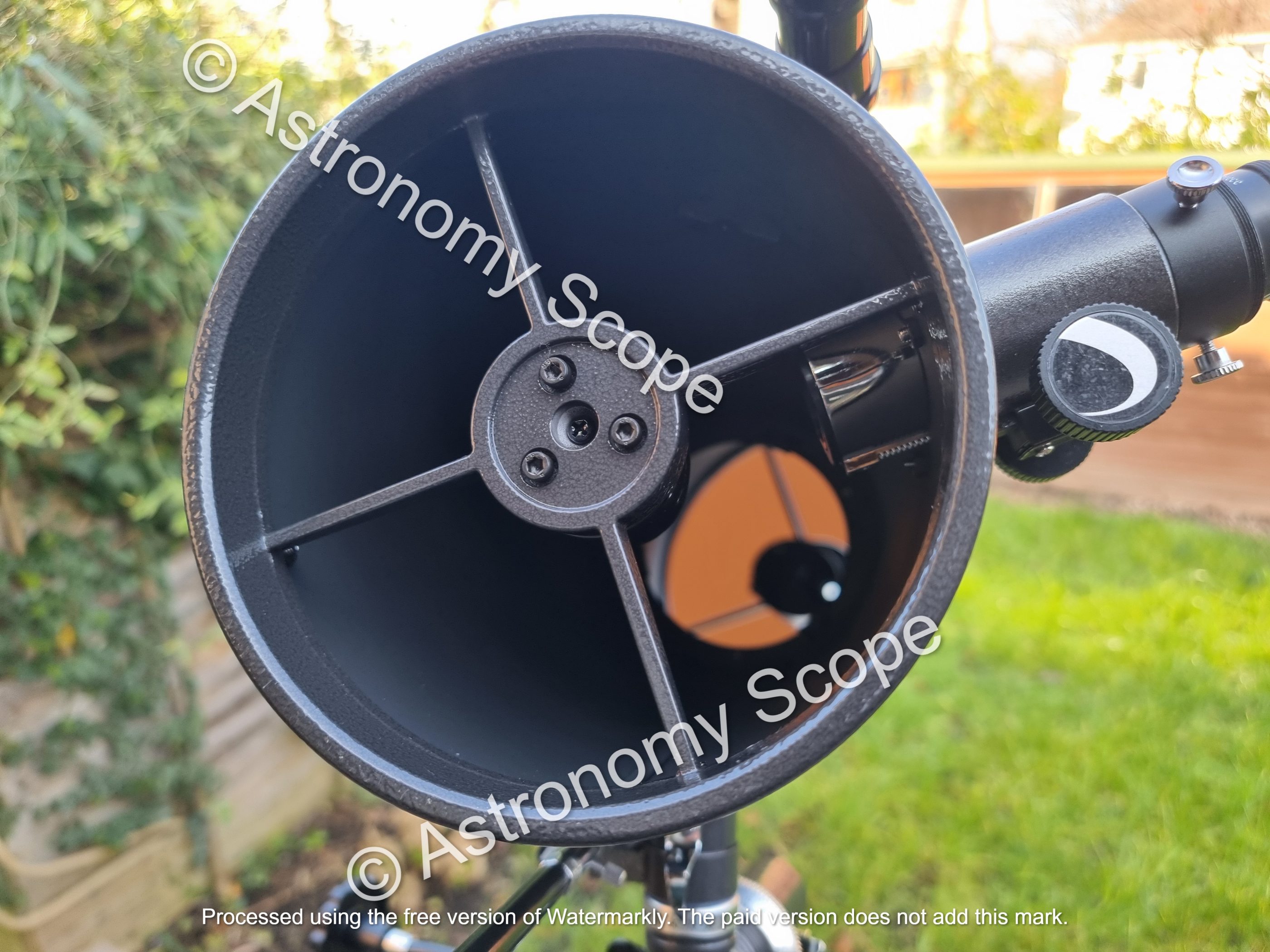
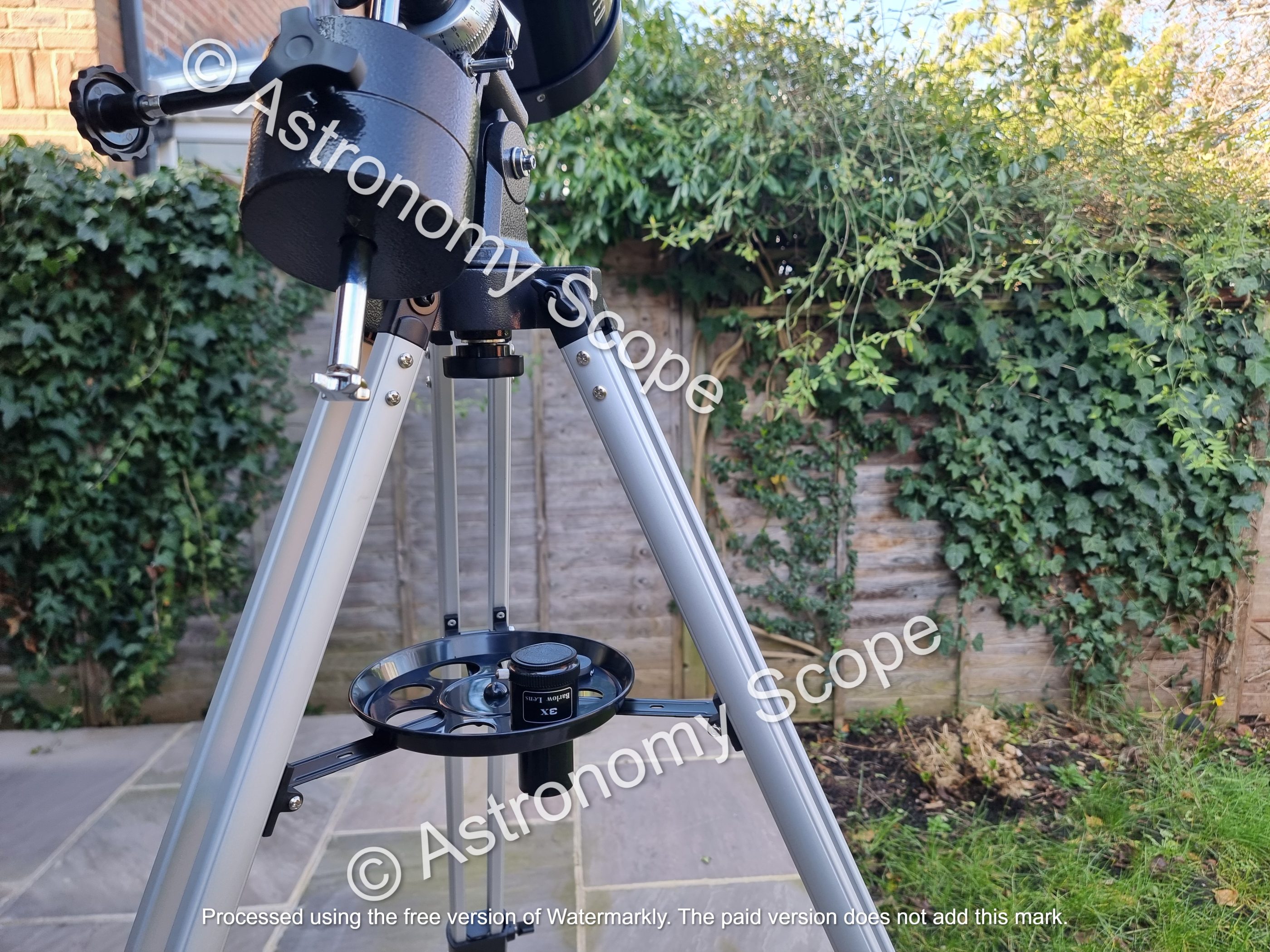
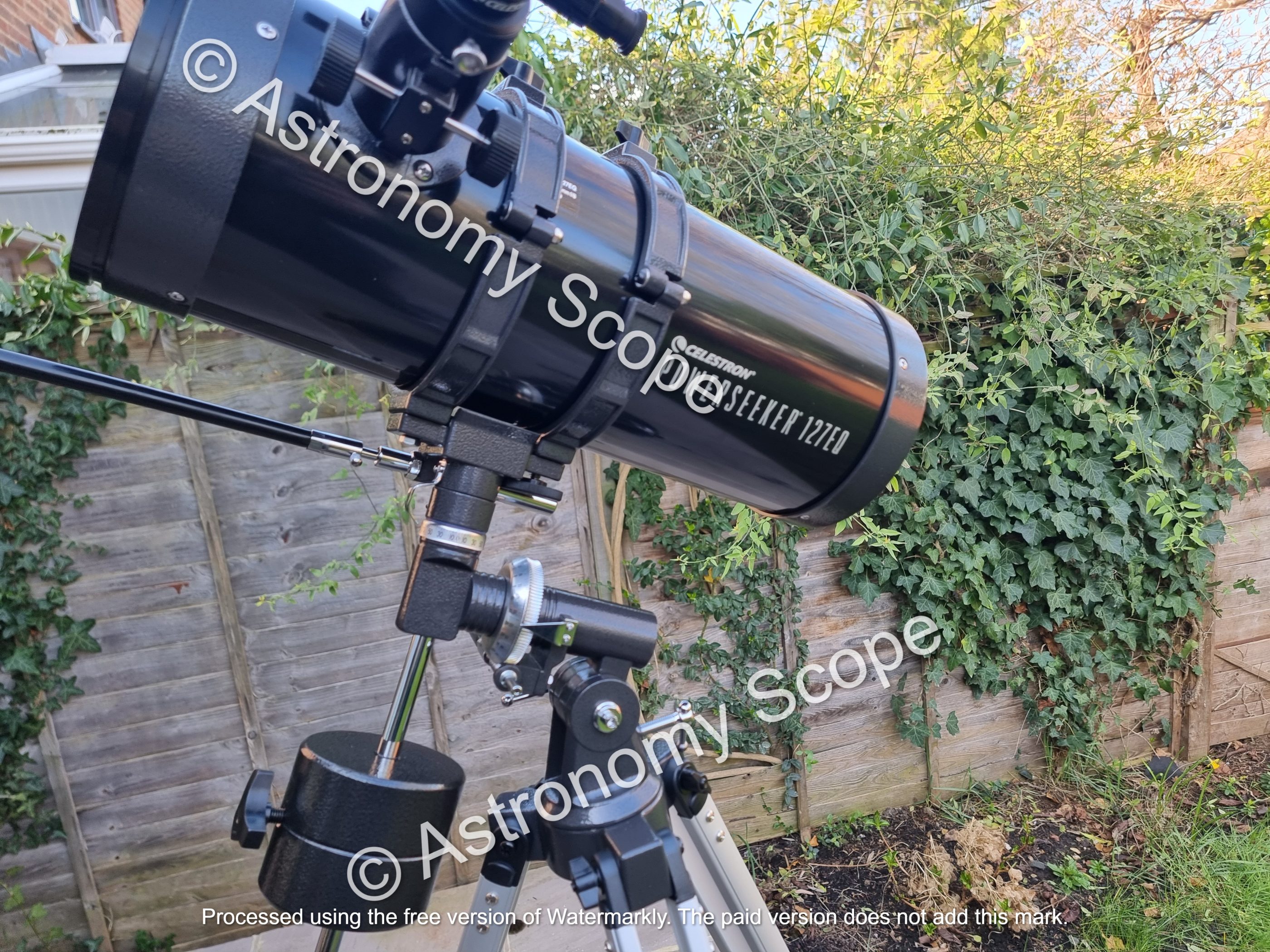
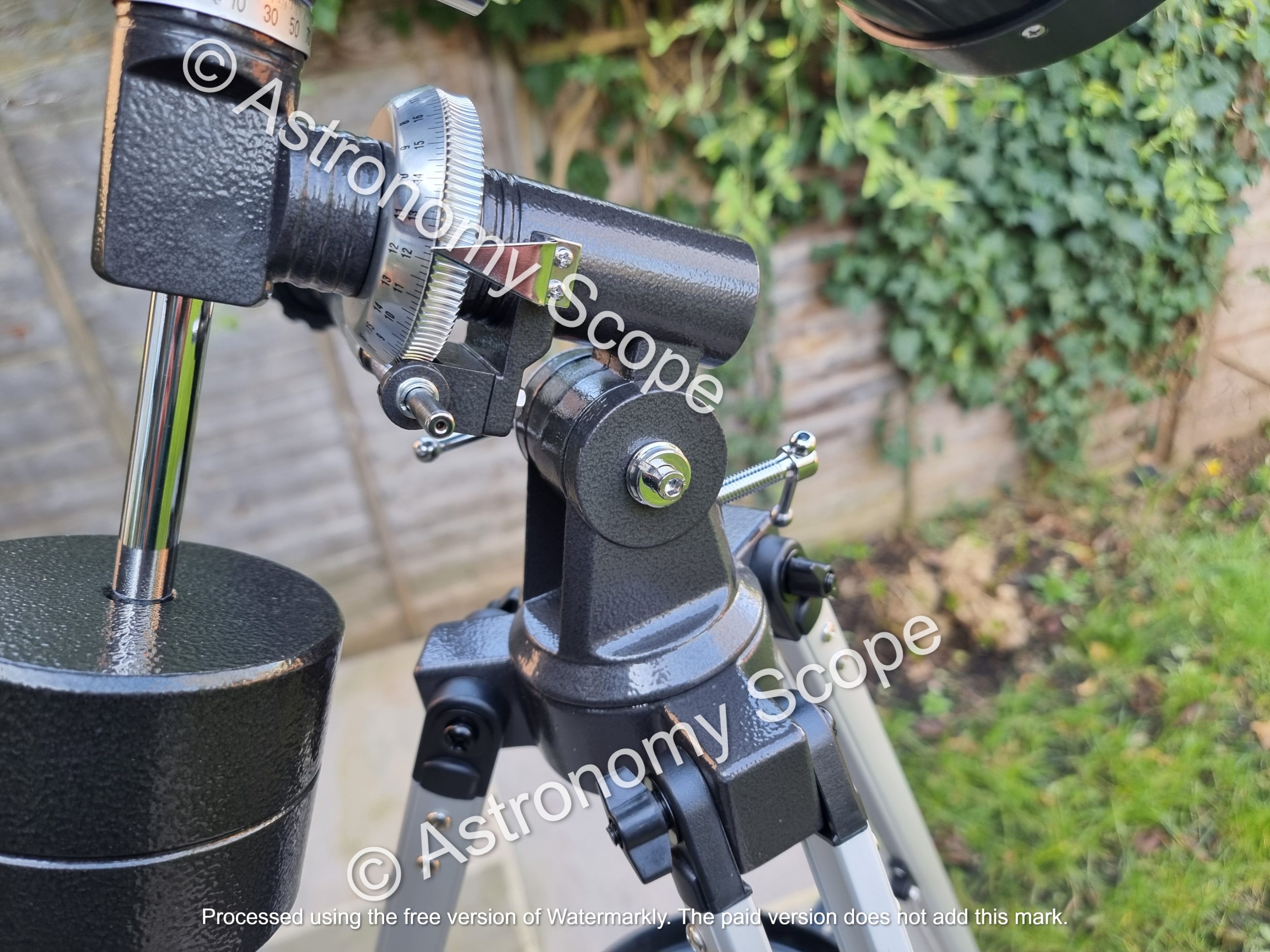
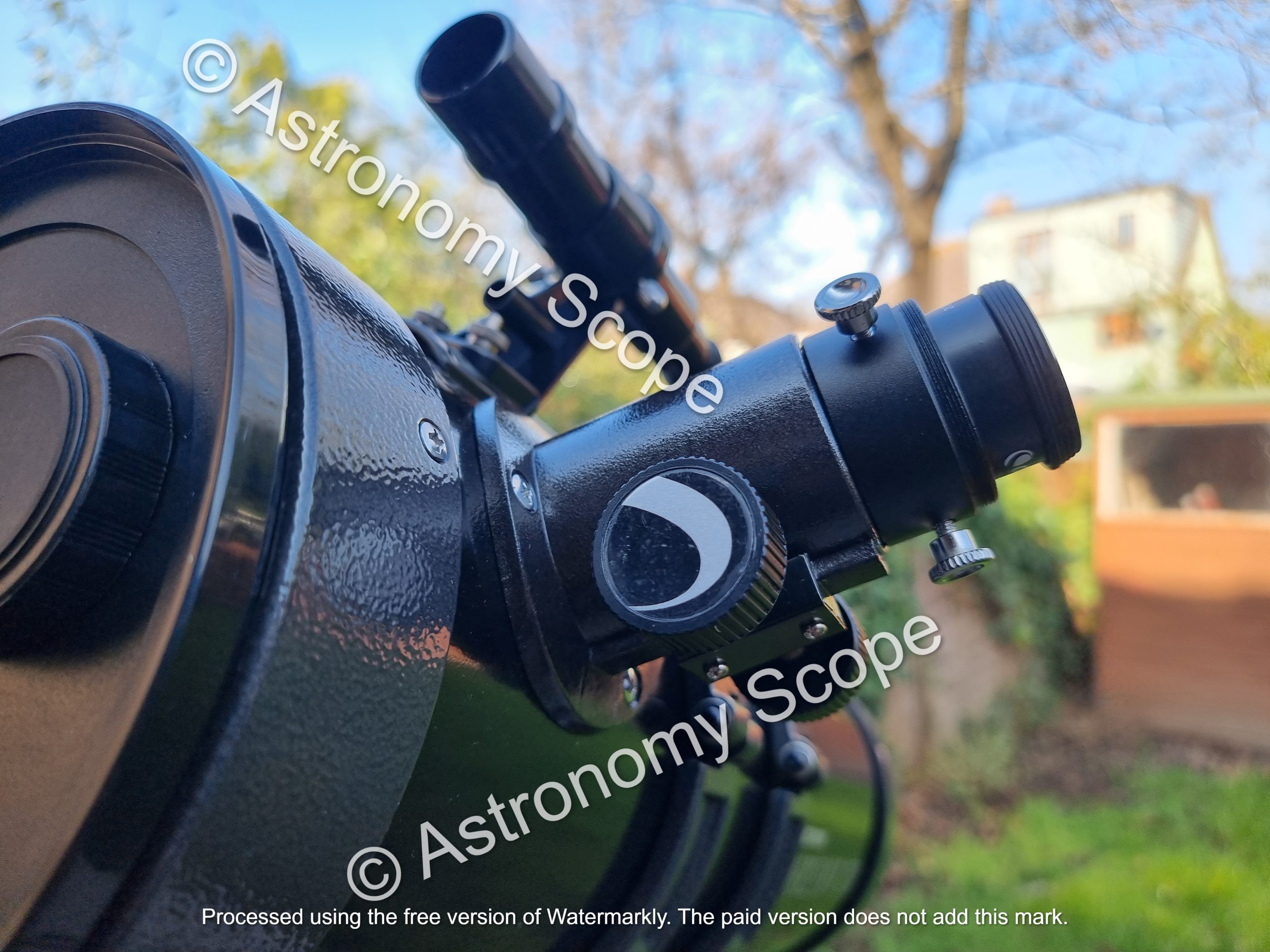
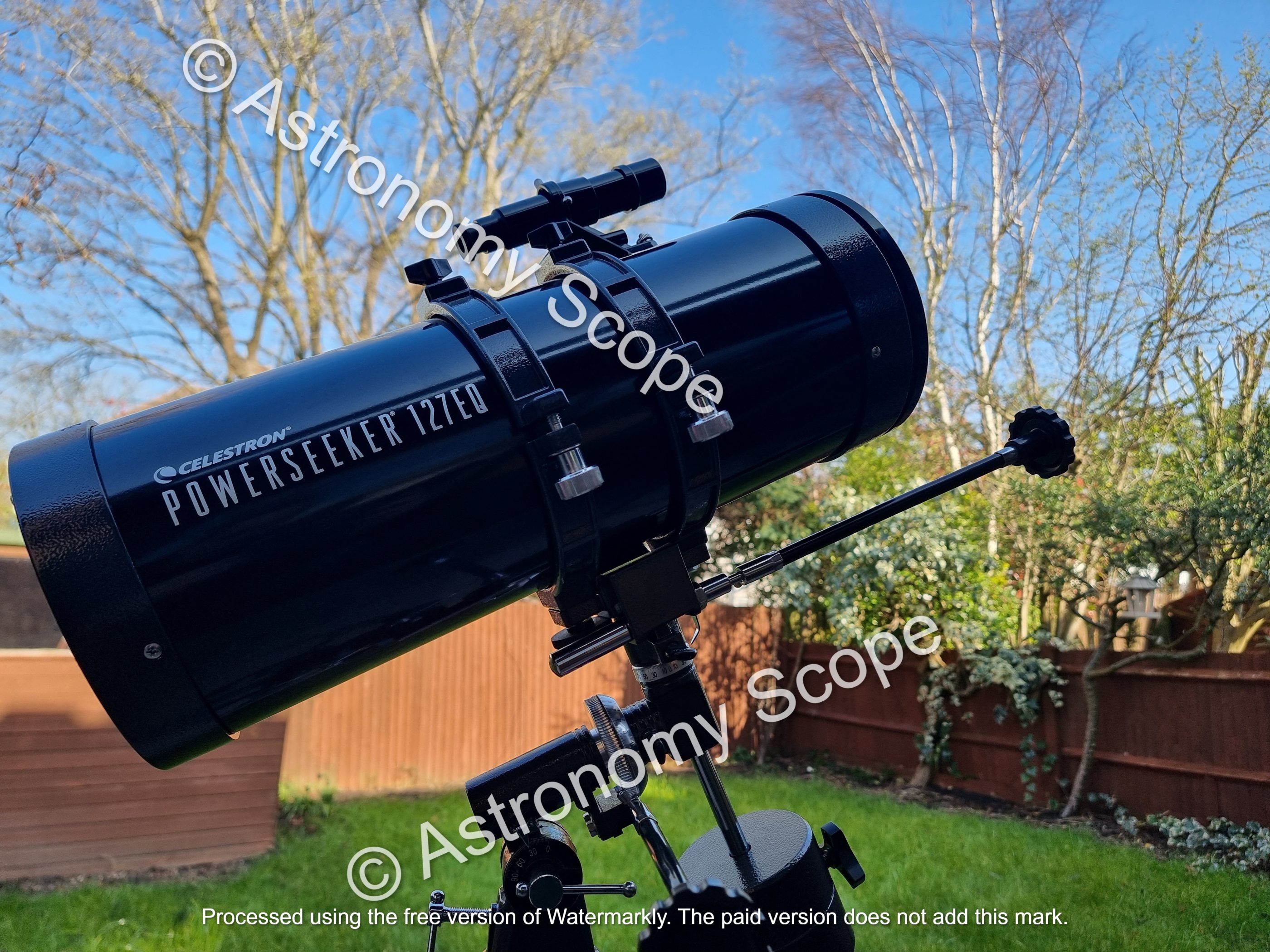
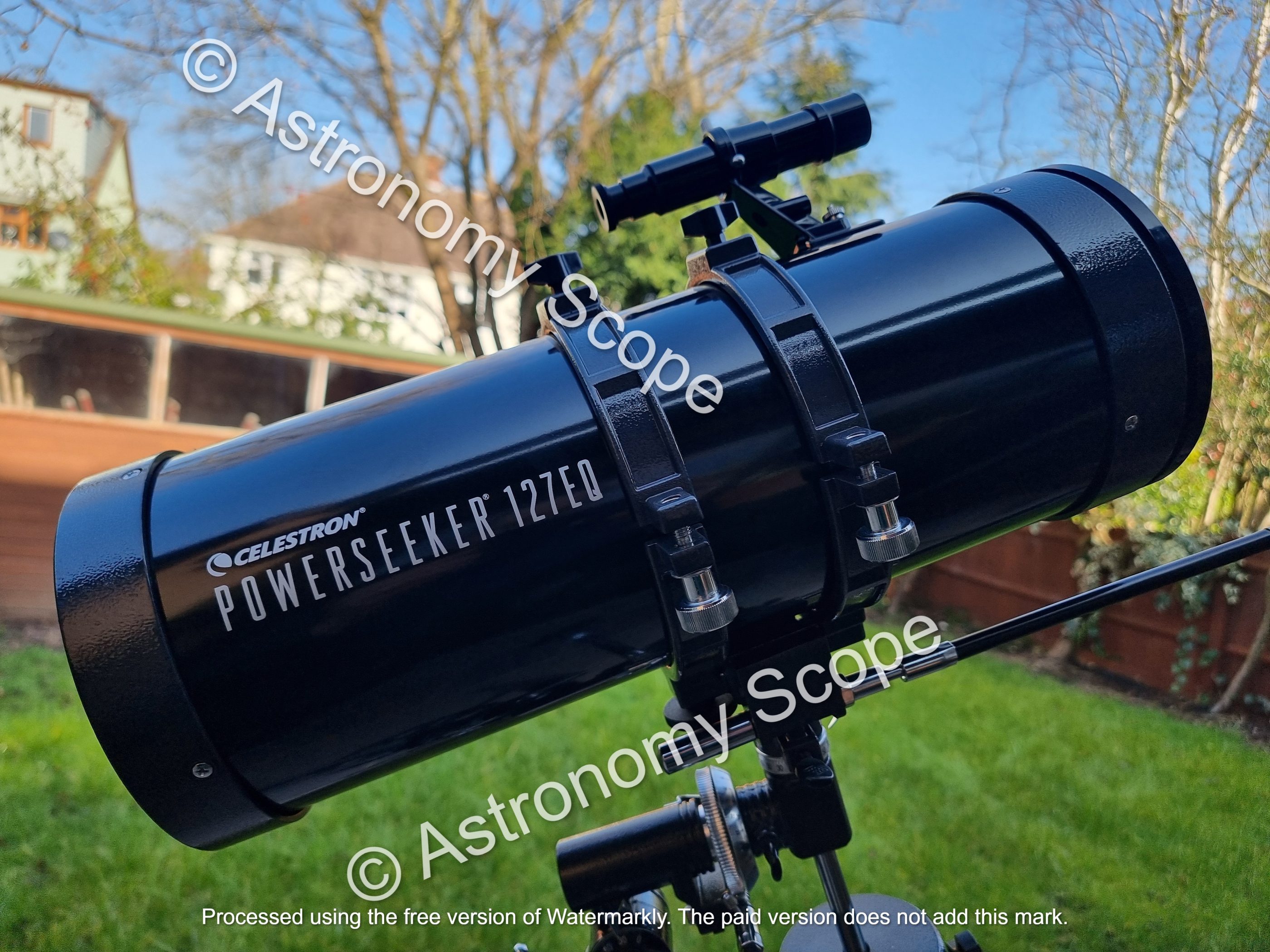
Technical Specifications Explained
The Celestron PowerSeeker 127EQ is a 127 mm (5-inch) aperture Newtonian reflector telescope.
This size is significant because it directly influences the telescope’s light-gathering capabilities, which affects the clarity and detail of the objects you can observe.
It boasts a maximum useful magnification of 300x, achieved using a 3x Barlow lens included in the package.
The telescope operates on a German equatorial mount, providing stability and precision in tracking celestial objects.
It weighs around 10 kg (22 lbs), making it relatively heavy but sturdy.
What Do You Get Included?
Out of the box, the PowerSeeker 127EQ comes with everything you will need to use it.
You’ll receive a tripod, accessory tray, a 10 mm eyepiece, a 3x Barlow lens, a 20 mm erecting eyepiece (for terrestrial viewing), and a finder scope to help locate objects in the sky.
Additionally, various rods and gears are included to adjust and fine-tune the telescope’s positioning.
Protective covers for the eyepiece and the main lens are also provided, ensuring your equipment stays clean and safe.
Pros: Why I Recommend the Celestron PowerSeeker 127EQ
Very Affordable
One of the most significant advantages of this telescope is its price point. It’s one of the most budget-friendly options, especially considering its optical setup.
The PowerSeeker 127EQ is also readily available, making it easy to purchase.
Brilliant Build Quality
The telescope’s construction is solid and durable, with a design that is both functional and aesthetically pleasing.
The weight adds to its robustness, ensuring stability during observation.
The Equatorial Mount Gives You Control
The German equatorial mount allows for precise tracking and fine adjustments, making it easier to follow celestial objects as they move across the sky.
This feature is particularly beneficial for those who appreciate hands-on control during their stargazing sessions.
Great Magnification
With the included Barlow lens, the telescope’s magnification capability is impressive, allowing for detailed views of celestial objects.
Cons: Considerations Before Buying
Bulky Size and Portability
The telescope’s size and weight might be a drawback for those looking for a more portable option.
It’s not the most travel-friendly choice, requiring a dedicated space for setup and observation.
Assembly and Setup Challenges
Setting up the PowerSeeker 127EQ can be challenging, especially for beginners.
The initial assembly might take some time and patience, and the instructions could be clearer.
The Required Learning Curve
The equatorial mount, while offering precise control, has a steeper learning curve.
New users may need some time to become comfortable with aligning and tracking objects.
Viewing Experience: What You Can Expect to See
The PowerSeeker 127EQ excels in lunar and planetary observation.
The moon’s surface details are particularly stunning through this telescope. Planets like Venus, Jupiter, Mars, and Saturn’s rings are also visible, although atmospheric conditions can affect clarity.
Deep-sky observations are possible to some extent, allowing you to explore stars and galaxies beyond our solar system.
Is The Celestron PowerSeeker 127EQ Right For You?
This telescope is ideal for new astronomers who are looking for an affordable entry point into the hobby.
It offers a hands-on experience that can enhance your understanding and appreciation of astronomy.
While it may not satisfy the needs of more experienced astronomers looking for advanced features, it’s a solid choice for beginners and makes a great gift for anyone interested in exploring the night sky.
Final Verdict
The Celestron PowerSeeker 127EQ is a valuable tool for anyone eager to delve into astronomy.
Its combination of affordability, build quality, and performance makes it a standout option for beginners.
While it presents some challenges in terms of setup and portability, the rewards of observing the wonders of the universe make it well worth the effort.
Whether you’re gazing at the moon’s craters or tracking the rings of Saturn, the PowerSeeker 127EQ offers a gateway to the cosmos that is both accessible and enjoyable.
FAQs
Is the Celestron PowerSeeker 127EQ suitable for children?
Yes, with adult supervision and assistance, this telescope can be a fantastic educational tool for children interested in astronomy.
Can I use this telescope for astrophotography?
While it’s possible to capture some basic astrophotography shots, the PowerSeeker 127EQ is primarily designed for visual observation.
Those serious about astrophotography may want to consider telescopes with dedicated features for photography.
How does weather affect the viewing experience?
Atmospheric conditions, such as light pollution, cloud cover, and humidity, can significantly impact what you’re able to see with any telescope, including the PowerSeeker 127EQ. Clear, dark skies are ideal for stargazing.
In the market for a telescope? Read my other telescope reviews:
- Celestron StarSense Explorer LT 114AZ Review
- Celestron Travel Scope 70 Review
- Celestron PowerSeeker 50az Telescope Review

Hey, my name is Jeremy. I’m a passionate and seasoned astronomer who loves nothing more than observing the night sky. I also love researching, learning, and writing all things Space and the Universe. I created Astronomy Scope to share my knowledge, experience, suggestions, and recommendations of what I have learned along the way while helping anyone to get into and maximize their enjoyment of the hobby.

